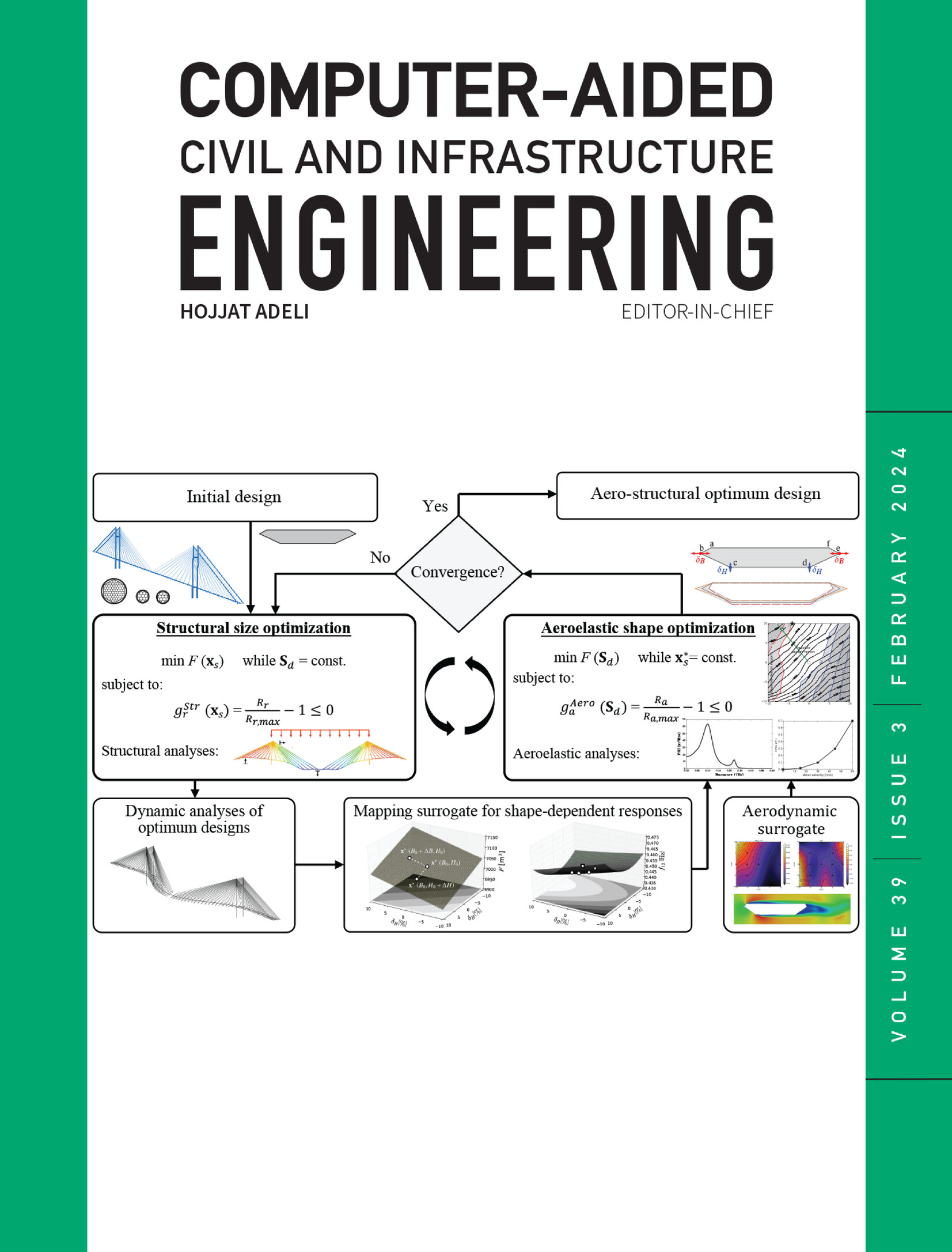A surface electromyography–based deep learning model for guiding semi‐autonomous drones in road infrastructure inspection
IF 8.5
1区 工程技术
Q1 COMPUTER SCIENCE, INTERDISCIPLINARY APPLICATIONS
引用次数: 0
Abstract
While semi‐autonomous drones are increasingly used for road infrastructure inspection, their insufficient ability to independently handle complex scenarios beyond initial job planning hinders their full potential. To address this, the paper proposes a human–drone collaborative inspection approach leveraging flexible surface electromyography (sEMG) for conveying inspectors' speech guidance to intelligent drones. Specifically, this paper contributes a new data set, sEMG Commands for Piloting Drones (sCPD), and an sEMG‐based Cross‐subject Classification Network (sXCNet), for both command keyword recognition and inspector identification. sXCNet acquires the desired functions and performance through a synergetic effort of sEMG signal processing, spatial‐temporal‐frequency deep feature extraction, and multitasking‐enabled cross‐subject representation learning. The cross‐subject design permits deploying one unified model across all authorized inspectors, eliminating the need for subject‐dependent models tailored to individual users. sXCNet achieves notable classification accuracies of 98.1% on the sCPD data set and 86.1% on the public Ninapro db1 data set, demonstrating strong potential for advancing sEMG‐enabled human–drone collaboration in road infrastructure inspection.基于表面肌电图的深度学习模型在道路基础设施检测中引导半自动无人机
虽然半自动无人机越来越多地用于道路基础设施检查,但它们独立处理复杂场景的能力不足,超出了最初的工作规划,阻碍了它们充分发挥潜力。为了解决这一问题,本文提出了一种利用柔性表面肌电图(sEMG)将检查员的语音指导传递给智能无人机的人-无人机协同检测方法。具体来说,本文提供了一个新的数据集,无人机驾驶表面肌电信号命令(sCPD),以及一个基于表面肌电信号的跨主题分类网络(sXCNet),用于命令关键字识别和检查员识别。sXCNet通过表面肌电信号处理、时空频率深度特征提取和多任务跨主题表征学习的协同努力,获得了所需的功能和性能。跨主题设计允许在所有授权检查员中部署一个统一的模型,消除了为个人用户量身定制的主题相关模型的需要。sXCNet在sCPD数据集上实现了98.1%的分类准确率,在Ninapro db1公共数据集上实现了86.1%的分类准确率,显示出在道路基础设施检查中推进基于sEMG的人类无人机协作的强大潜力。
本文章由计算机程序翻译,如有差异,请以英文原文为准。
求助全文
约1分钟内获得全文
求助全文
来源期刊
CiteScore
17.60
自引率
19.80%
发文量
146
审稿时长
1 months
期刊介绍:
Computer-Aided Civil and Infrastructure Engineering stands as a scholarly, peer-reviewed archival journal, serving as a vital link between advancements in computer technology and civil and infrastructure engineering. The journal serves as a distinctive platform for the publication of original articles, spotlighting novel computational techniques and inventive applications of computers. Specifically, it concentrates on recent progress in computer and information technologies, fostering the development and application of emerging computing paradigms.
Encompassing a broad scope, the journal addresses bridge, construction, environmental, highway, geotechnical, structural, transportation, and water resources engineering. It extends its reach to the management of infrastructure systems, covering domains such as highways, bridges, pavements, airports, and utilities. The journal delves into areas like artificial intelligence, cognitive modeling, concurrent engineering, database management, distributed computing, evolutionary computing, fuzzy logic, genetic algorithms, geometric modeling, internet-based technologies, knowledge discovery and engineering, machine learning, mobile computing, multimedia technologies, networking, neural network computing, optimization and search, parallel processing, robotics, smart structures, software engineering, virtual reality, and visualization techniques.

 求助内容:
求助内容: 应助结果提醒方式:
应助结果提醒方式:


